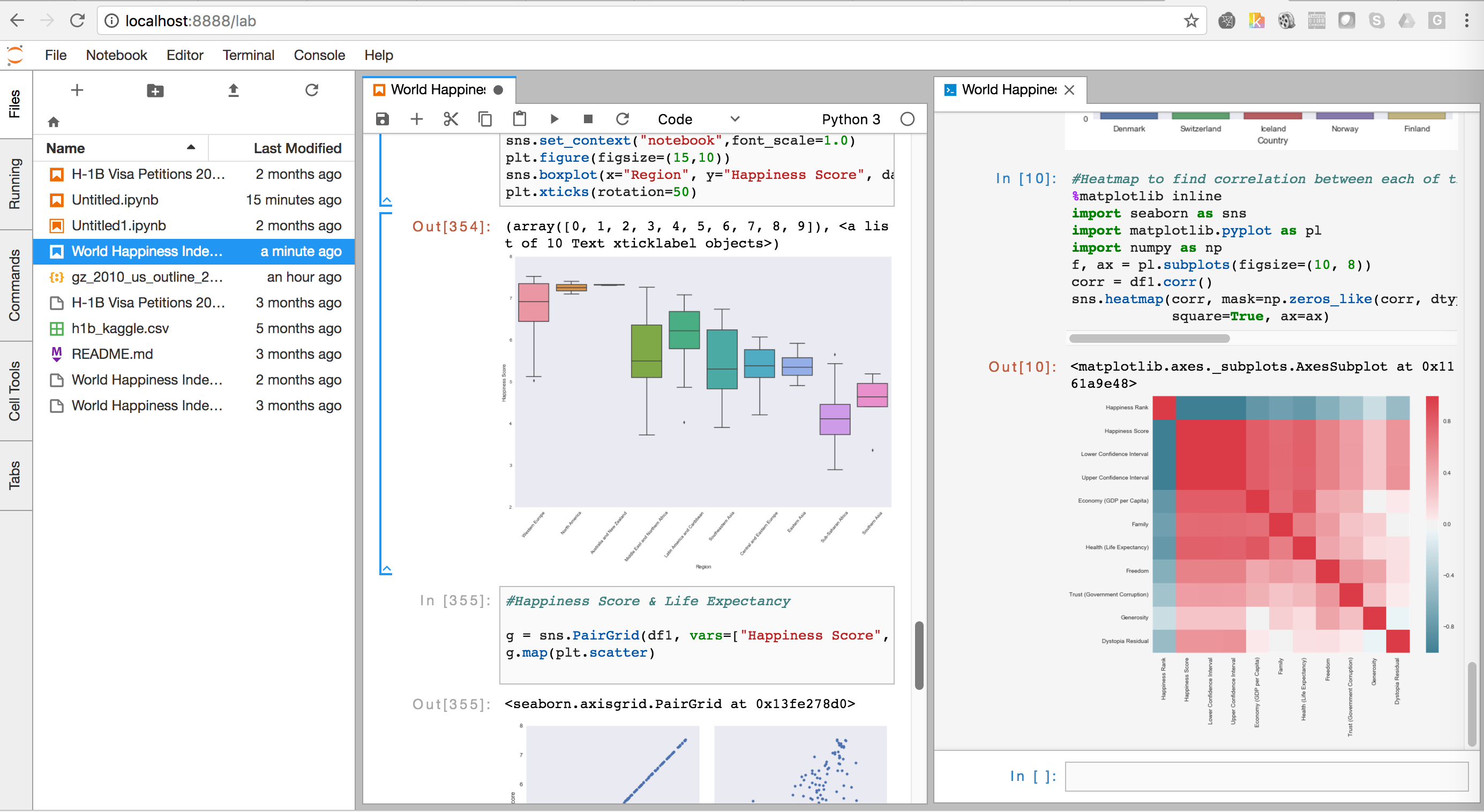

- #Combining jupyterlab and lighttable how to#
- #Combining jupyterlab and lighttable install#
- #Combining jupyterlab and lighttable code#

#Combining jupyterlab and lighttable how to#
Start and explore JupyterLab How to open Jupyter lab from the command-line
#Combining jupyterlab and lighttable install#
Like with Pip, if you only want o install Jupyter Notebook, use this: $ mamba install -c conda-forge notebook $ conda install -c conda-forge jupyterlab JupyterLab can be installed with mamba and conda as well: $ mamba install -c conda-forge jupyterlab If you only want Jupyter Notebook, use this instead: $ pip install -user notebook Install JupyterLab with Conda So, the most recommended way to install Jupyter Lab is to use the pip install command: $ pip install -user jupyterlab The advantage is that you don’t need root access to the system you’re working on. You can force this behavior by using the -user option. local/bin folder if you don’t specify -g and if you’re not using a virtual environment. On many Linux systems, however, Pip will install the package in a. Installing the package globally with Pip requires the -g option. Install Jupyter Lab and/or Notebook with PipĪs noted above, you want to install Jupyter Lab system-wide, or at least in your local bin folder.

However, tools like this you want to install once. With most packages, I’m stressing the importance of using a virtual environment. One thing to note beforehand: I recommend installing this system-wide. I’ll demonstrate how to install with both Pip and Conda. Like all Python software, installing Jupyter Lab is a breeze. Many plugins are created by fellow data scientists, specifically targeted at people like you.It’s easy to exchange and share your work.This has a couple of advantages on its own: In this case, you’ll notice that many others in data science use Jupyter Notebooks. However, some IDEs, like VSCode, will offer a built-in Jupyter Notebook (see further down this article). So a Notebook is much more geared toward those working with and analyzing data than regular IDEs. It’s ideal to use in combination with NumPy and Pandas. While doing so, the Notebook is a log of what you did and how you did it.

#Combining jupyterlab and lighttable code#
The following image perfectly demonstrated this: A Jupyter notebook combining documentation, output, and code Interactive explorationĪ Notebook allows you to explore your data interactively. The biggest advantage of using notebooks is that it allows you to combine three things into one environment:Īll the while offering an interactive environment where you or your fellows can tinker and experiment. Let’s look at some of the advantages these notebooks have to offer. In contrast, (data) scientists and data analysts have a different focus and often prefer a Notebook-style IDE. Python application developers often prefer and work with a regular Python IDE like VSCode, which facilitates debugging, unit testing, deployment, and version management. Advantages of using Jupyter Lab and Notebook You can install Jupyter Notebook separately if you want, and I’ll show you how in this article. So in short, JupyterLab is the browser-based IDE, while Jupyter Notebook is the Notebook component inside it. On the other hand, Jupyter Notebook is a REPL-like environment that fuses code, data, and documentation. However, I’ll focus solely on Python in this article. JupyterLab supports over 40 other programming languages, like Java, Scala, Julia, and R. It’s also extensible: everyone can write plugins that add new components and integrate with existing ones. JupyterLab is flexible: you can configure and arrange the user interface to support a wide range of workflows in data science, scientific computing, and machine learning. In addition, it allows you to open a Python terminal, as most IDEs do, to experiment and tinker. It’s most well known for offering a so-called notebook called Jupyter Notebook, but you can also use it to create and edit other files, like code, text files, and markdown files. JupyterLab is a web-based, interactive development environment. How to install Jupyter Notebook and Lab.Advantages of using Jupyter Lab and Notebook.


 0 kommentar(er)
0 kommentar(er)
